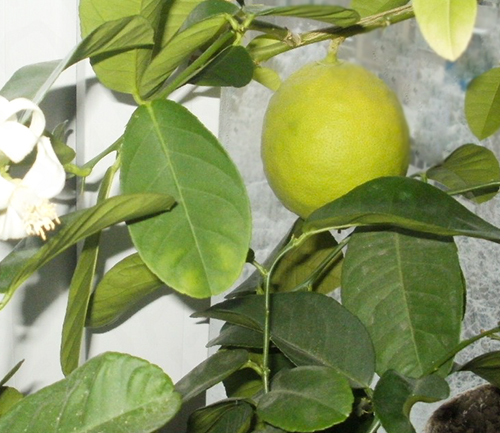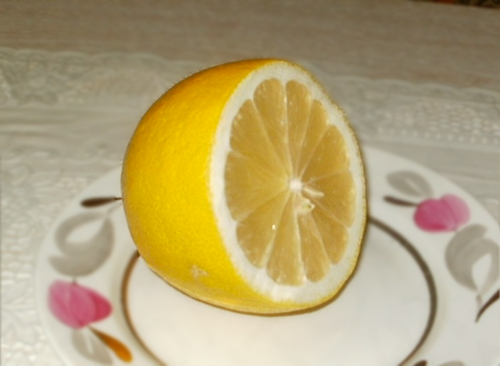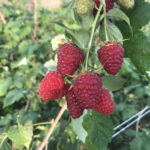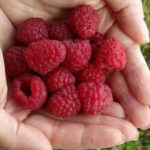Lemon variety Kursk
Kurskiy is a variety of domestic selection. Previously, it was very popular with lovers of home citrus growing in the Soviet country. In recent decades, largely due to the emergence of new foreign hybrids, interest in it has faded, and now it is rarely seen on someone's windowsill.
How did this variety come about?
There is a widespread belief that the lemon was bred in 1970 by the Kursk lover of home citrus plants, Anatoly Andreevich Fomenko. This version was voiced by the famous popularizer of indoor citrus growing V. Dadykin in one of his books.

There is no doubt that the author of the variety is indicated correctly. Differences arise about the timing of the emergence of the new citrus. The fact is that in 1954 Fomenko published a book called "Kursk Lemon", which already mentions the work on a new plant. However, the wording in the book is structured in such a way that it is not entirely clear whether we are talking about a variety as such, or we mean a certain collective concept: a lemon from the city of Kursk.
In any case, today we know for sure: the Kurskiy variety, indeed, was created by Anatoly Fomenko, through careful selection and subsequent special cultivation of seedlings Novogruzinsky lemon, widespread in the Soviet Union.
What does the crown look like?
Outwardly, our hero hardly differs from his parent - Novogruzinsky. He has the same powerful, spreading crown, with strong branches, equipped with many thorns.
Important! We must say right away that this is also the main drawback of the variety for indoor keeping. No matter how you cut the branches, no matter how you shape them, over the years they grow to the sides, the crown becomes spreading. The tree is almost impossible to place on the windowsill. Ideal if you have a separate free space for this instance.
The leaves are dark green, large, darker than the leaves of the "parent". They have an elongated shape, in which the width is 2.5 times less than the length. Slight jagging is observed along the edges.
Some flower lovers note that if you rub a leaf of this plant in your hand, a characteristic lemon scent appears, in which, however, there is a slight mint note.
An important feature of the variety is its increased resistance to dry air and lack of light. These qualities, which are very valuable for homemade citrus fruits, arose as a result of the fact that it was seed-bred in indoor conditions.

Interesting! This plant belongs to the most cold-resistant lemons. The crown of an adult specimen is able to survive with a short-term drop in temperature to minus 4 ° C.
Flowering features
They also differ little from Novogruzinsky. Kurskiy is a remontant variety, capable of blooming twice a year - in early spring and in the first half of autumn. Its flowers are large, about 5 cm in diameter, mostly single. Occasionally form inflorescences of 2 - 4 buds. The smell of blossoming flowers is strong, pleasant, they have a pure white color.
Flowering occurs relatively late, about the fourth year after grafting. In some cases, it is able to bloom in the third year. Slightly delayed flowering is one of the disadvantages of the plant in question.
Description of fruits
The variety is high-yielding, at home it is capable of producing up to three dozen fruits per year (but we are talking about the best specimens). The first mother tree of Fomenko himself in 14 years of life has grown about 8 hundred fruits!
The average fruit weight ranges from 200 to 250 grams. In any case, this is what the author of the variety himself wrote. In some cases, the weight can reach half a kilogram, but often - only 150 grams.Much depends on the conditions under which the crop was grown, how the tree itself develops.
The fruits are slightly elongated, sometimes slightly pear-shaped, with a rounded nipple at the very tip. The peel is dark yellow in color, fragrant, almost devoid of bitterness. Other characteristics of the fruit:
- the pulp is juicy, aromatic;
- acid is not very pronounced;
- the peel is thin, well separated from the pulp;
- the surface is smooth, almost devoid of tuberosity;
- fruits are stored for a long time, have high transportability.
In general, Kurskiy can be attributed to varieties that are excellent for growing in rooms, provided that there is a lot of free space in the room.








